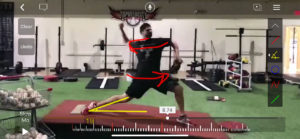
Are you a baseball player looking to improve your pitching skills?
Look no further than remote video analysis with coaches personally trained by Brent Pourciau.
With recorded video analysis, you can receive quick remote coaching on your pitching sequence and focus on the key biomechanical variables that will benefit you the most. This is great for beginners looking to improve their technique.
If you want even more in-depth training, opt for a recorded biomechanics video analysis session. Our coaches will thoroughly review your biomechanical sequence and cover nine key variables that can affect health and performance. We’ll compare each step of your sequence to proper movement and timing, and establish a plan for improvement.
Sign up for TopVelocity Pro Patreon to access this valuable remote training tool and continue your development as a pitcher. Simply send us a link to your video, and we’ll get started on the analysis. Start improving your pitching skills today with remote video analysis from coaches personally trained by Brent Pourciau.
Remote Coaching Options
Recorded Video Analysis – A quick remote coach review and overview of your video and pitching sequence, focusing on the key biomechanical variables that will most benefit you, with suggestions for improvement. This remote video analysis option is a great place for young pitchers to begin!
Recorded Biomechanics Video Analysis Session – A thorough remote coaching review of your biomechanical sequence, covering 9 key biomechanical variables that can affect health and performance. Each step of the sequence will be reviewed and compared to the proper movement and timing. After the biomechanical video analysis is completed, an improvement plan will be established during the session.
Steps to Get Started Remote Training
- Signup for TopVelocity Pro Patreon
- Send a link to your video for analysis
- Once we receive your video the analysis will be completed and uploaded with drills, lifts, and exercises to follow for training to improve your issues.
Memberships provide the training tools to continue your development.



